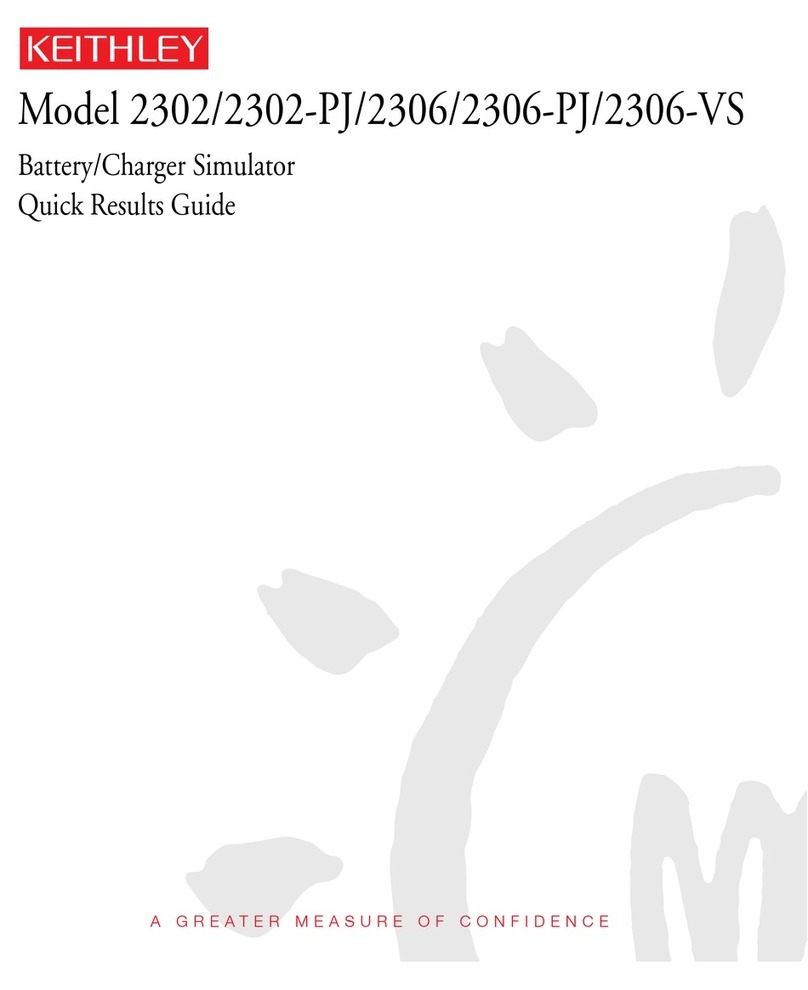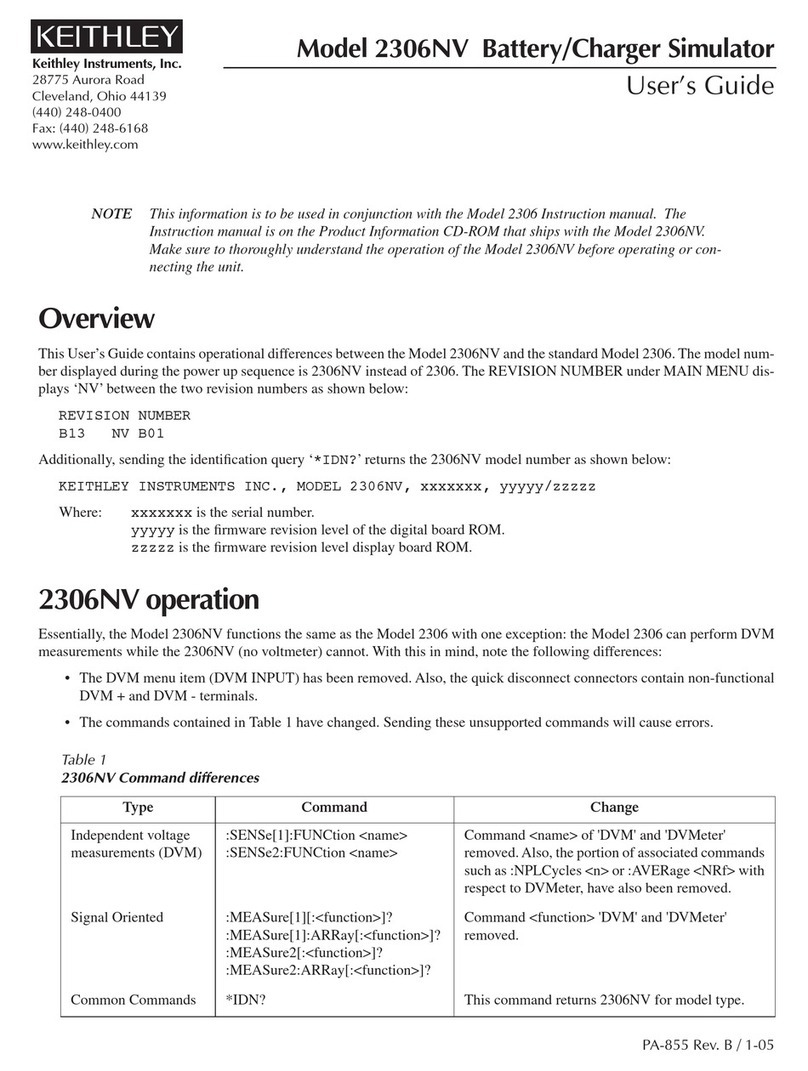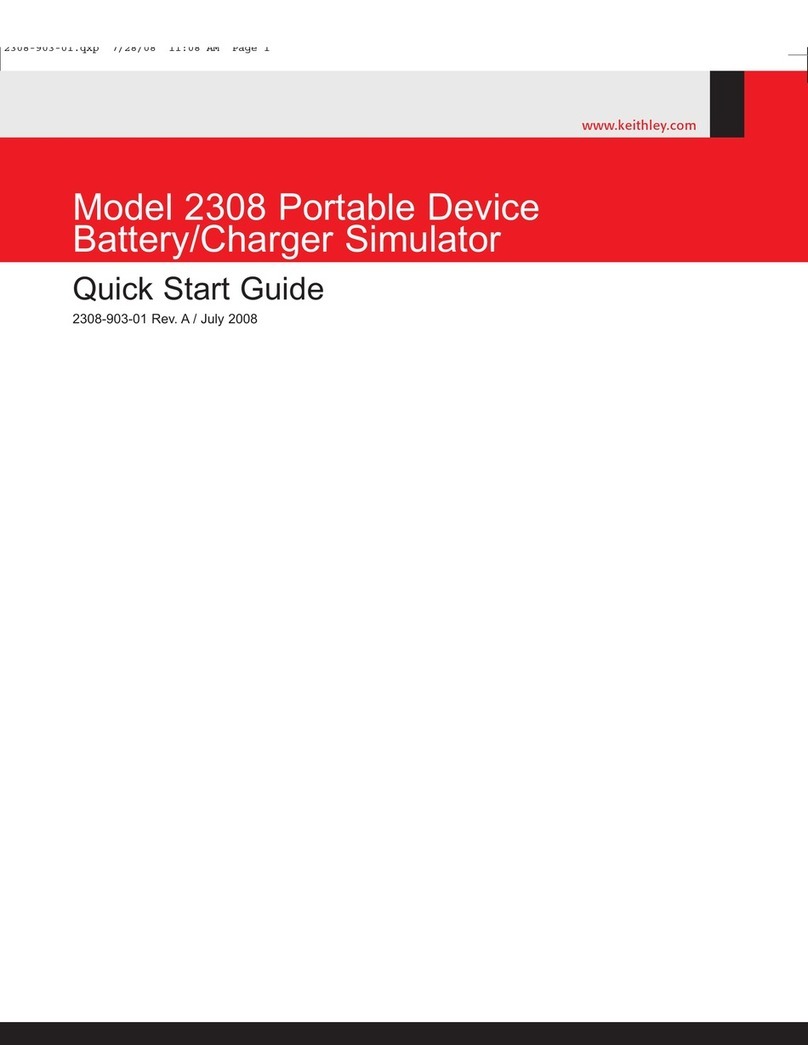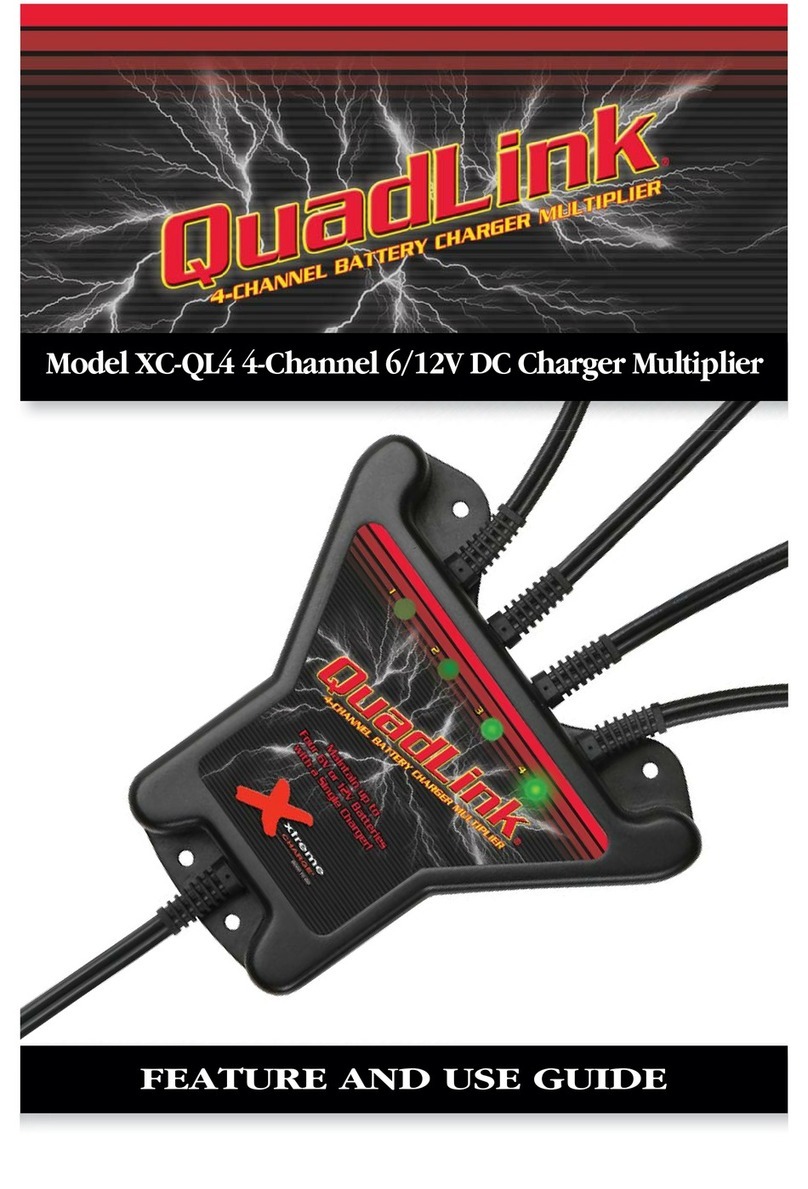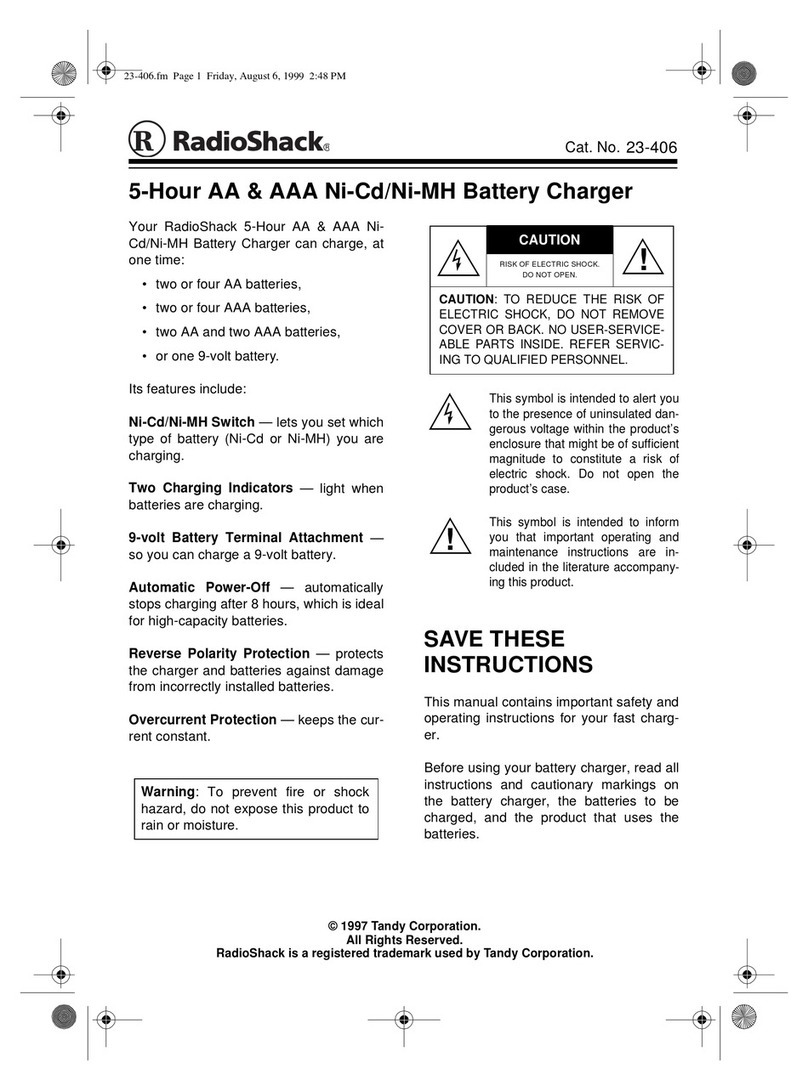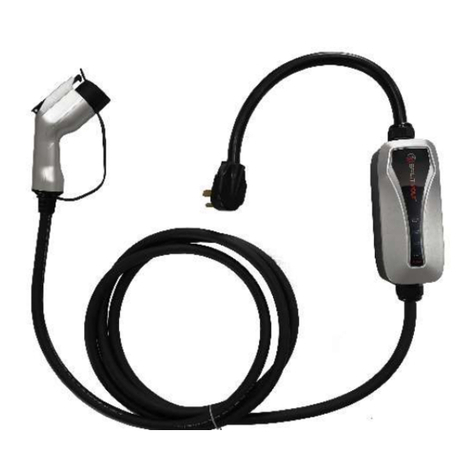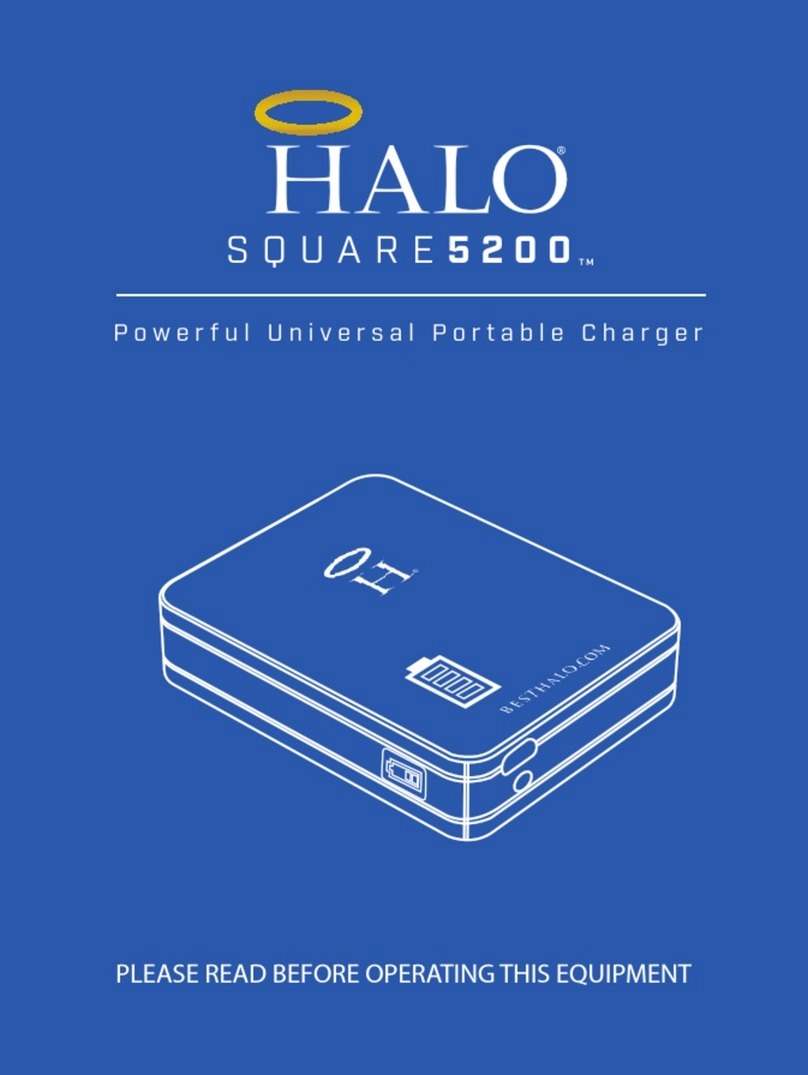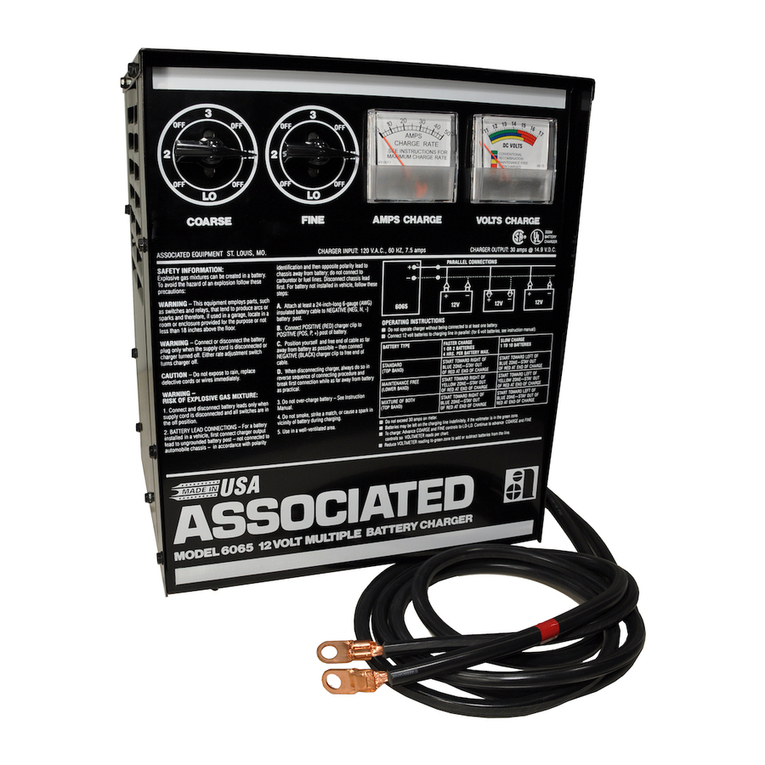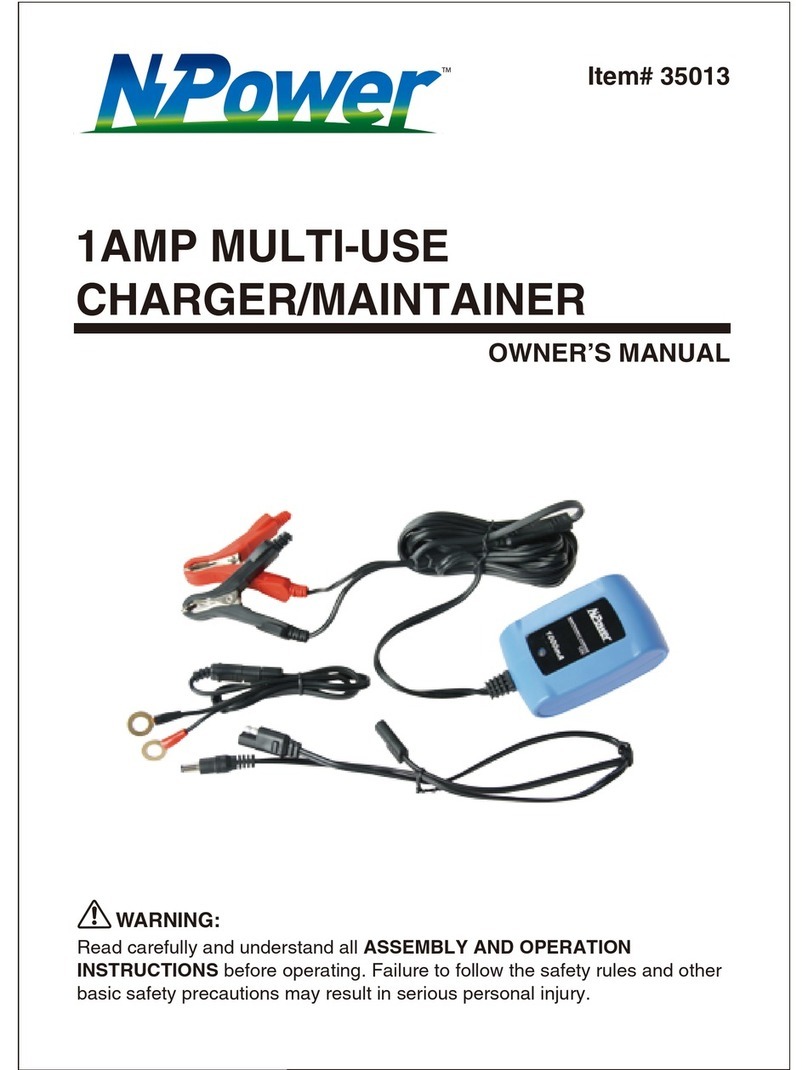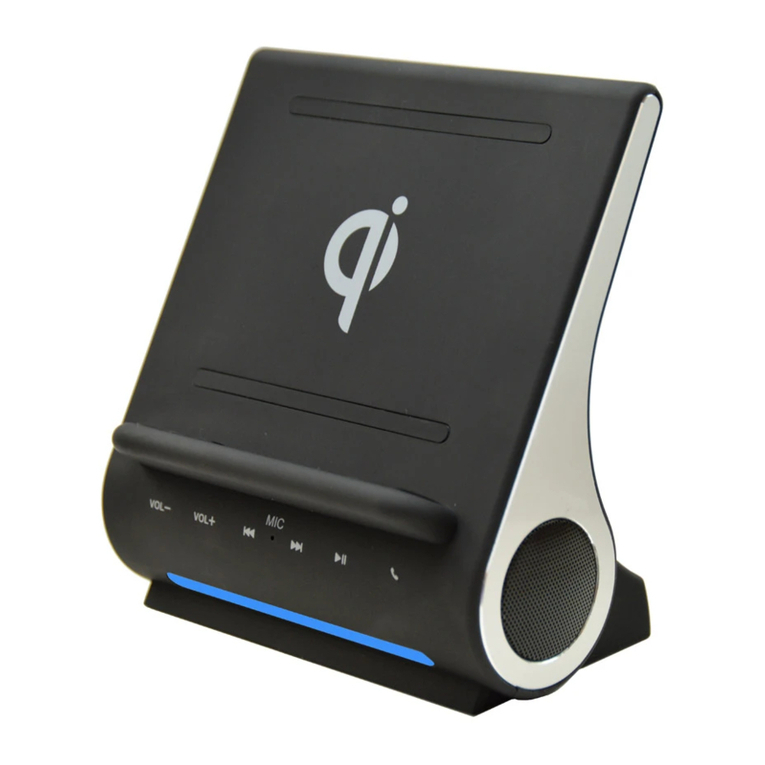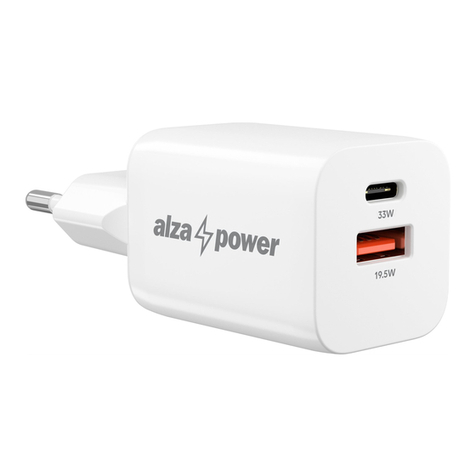Keithley 2308 User manual

www.keithley.com
A GREATER MEASURE OF CONFIDENCE
www.keithley.com
A GREATER MEASURE OF CONFIDENCE
Model 2308 Portable Device
Battery/Charger Simulator
User’s Manual
2308-900-01 Rev. A / July 2008
Model 2308 Portable Device
Battery/Charger Simulator
User’s Manual
2308-900-01 Rev. A / July 2008
2308-900-01.qxp 7/28/08 11:07 AM Page 1

.

A G R E A T E R M E A S U R E O F C O N F I D E N C E
Keithley Instruments, Inc.
Corporate Headquarters • 28775 Aurora Road • Cleveland, Ohio 44139
440-248-0400 • Fax: 440-248-6168 • 1-888-KEITHLEY (1-888-534-8453) • www.keithley.com
3/07
WARRANTY
Keithley Instruments, Inc. warrants this product to be free from defects in material and workmanship for a period of
one (1) year from date of shipment.
Keithley Instruments, Inc. warrants the following items for 90 days from the date of shipment: probes, cables,
software, rechargeable batteries, diskettes, and documentation.
During the warranty period, Keithley Instruments will, at its option, either repair or replace any product that proves
to be defective.
To exercise this warranty, write or call your local Keithley Instruments representative, or contact
Keithley Instruments headquarters in Cleveland, Ohio. You will be given prompt assistance and return instructions.
Send the product, transportation prepaid, to the indicated service facility. Repairs will be made and the product
returned, transportation prepaid. Repaired or replaced products are warranted for the balance of the original
warranty period, or at least 90 days.
LIMITATION OF WARRANTY
This warranty does not apply to defects resulting from product modification without Keithley Instruments’ express
written consent, or misuse of any product or part. This warranty also does not apply to fuses, software,
non-rechargeable batteries, damage from battery leakage, or problems arising from normal wear or failure to follow
instructions.
THIS WARRANTY IS IN LIEU OF ALL OTHER WARRANTIES, EXPRESSED OR IMPLIED, INCLUDING ANY
IMPLIED WARRANTY OF MERCHANTABILITY OR FITNESS FOR A PARTICULAR USE. THE REMEDIES
PROVIDED HEREIN ARE BUYER’S SOLE AND EXCLUSIVE REMEDIES.
NEITHER KEITHLEY INSTRUMENTS, INC. NOR ANY OF ITS EMPLOYEES SHALL BE LIABLE FOR ANY
DIRECT, INDIRECT, SPECIAL, INCIDENTAL, OR CONSEQUENTIAL DAMAGES ARISING OUT OF THE USE
OF ITS INSTRUMENTS AND SOFTWARE, EVEN IF KEITHLEY INSTRUMENTS, INC. HAS BEEN ADVISED IN
ADVANCE OF THE POSSIBILITY OF SUCH DAMAGES. SUCH EXCLUDED DAMAGES SHALL INCLUDE, BUT
ARE NOT LIMITED TO: COST OF REMOVAL AND INSTALLATION, LOSSES SUSTAINED AS THE RESULT OF
INJURY TO ANY PERSON, OR DAMAGE TO PROPERTY.

Model 2308 Portable Device
Battery/Charger Simulator
User’s Manual
©2008, Keithley Instruments, Inc.
All rights reserved.
Any unauthorized reproduction, photocopy, or use the information herein, in whole or in part, without the prior written
approval of Keithley Instruments, Inc. is strictly prohibited.
TSP, TSP-Link, and TSP-Net are trademarks of Keithley Instruments, Inc. All other brand names are trademarks or
registered trademarks of their respective holders.
Cleveland, Ohio, U.S.A.
2308-900-01 Rev. A / July 2008
Document Number:

Safety Precautions
11/07
The following safety precautions should be observed before using this product and any associated instrumentation. Although some
instruments and accessories would normally be used with non-hazardous voltages, there are situations where hazardous conditions may
be present.
This product is intended for use by qualified personnel who recognize shock hazards and are familiar with the safety precautions required
to avoid possible injury. Read and follow all installation, operation, and maintenance information carefully before using the product. Refer
to the user documentation for complete product specifications.
If the product is used in a manner not specified, the protection provided by the product warranty may be impaired.
The types of product users are:
Responsible body is the individual or group responsible for the use and maintenance of equipment, for ensuring that the equipment is
operated within its specifications and operating limits, and for ensuring that operators are adequately trained.
Operators use the product for its intended function. They must be trained in electrical safety procedures and proper use of the instrument.
They must be protected from electric shock and contact with hazardous live circuits.
Maintenance personnel perform routine procedures on the product to keep it operating properly, for example, setting the line voltage or
replacing consumable materials. Maintenance procedures are described in the user documentation. The procedures explicitly state if the
operator may perform them. Otherwise, they should be performed only by service personnel.
Service personnel are trained to work on live circuits, perform safe installations, and repair products. Only properly trained service
personnel may perform installation and service procedures.
Keithley Instruments products are designed for use with electrical signals that are rated Measurement Category I and Measurement
Category II, as described in the International Electrotechnical Commission (IEC) Standard IEC 60664. Most measurement, control, and
data I/O signals are Measurement Category I and must not be directly connected to mains voltage or to voltage sources with high transient
over-voltages. Measurement Category II connections require protection for high transient over-voltages often associated with local AC
mains connections. Assume all measurement, control, and data I/O connections are for connection to Category I sources unless otherwise
marked or described in the user documentation.
Exercise extreme caution when a shock hazard is present. Lethal voltage may be present on cable connector jacks or test fixtures. The
American National Standards Institute (ANSI) states that a shock hazard exists when voltage levels greater than 30V RMS, 42.4V peak,
or 60VDC are present. A good safety practice is to expect that hazardous voltage is present in any unknown circuit before measuring.
Operators of this product must be protected from electric shock at all times. The responsible body must ensure that operators are
prevented access and/or insulated from every connection point. In some cases, connections must be exposed to potential human contact.
Product operators in these circumstances must be trained to protect themselves from the risk of electric shock. If the circuit is capable of
operating at or above 1000V, no conductive part of the circuit may be exposed.
Do not connect switching cards directly to unlimited power circuits. They are intended to be used with impedance-limited sources. NEVER
connect switching cards directly to AC mains. When connecting sources to switching cards, install protective devices to limit fault current
and voltage to the card.
Before operating an instrument, ensure that the line cord is connected to a properly-grounded power receptacle. Inspect the connecting
cables, test leads, and jumpers for possible wear, cracks, or breaks before each use.

When installing equipment where access to the main power cord is restricted, such as rack mounting, a separate main input power
disconnect device must be provided in close proximity to the equipment and within easy reach of the operator.
For maximum safety, do not touch the product, test cables, or any other instruments while power is applied to the circuit under test.
ALWAYS remove power from the entire test system and discharge any capacitors before: connecting or disconnecting cables or jumpers,
installing or removing switching cards, or making internal changes, such as installing or removing jumpers.
Do not touch any object that could provide a current path to the common side of the circuit under test or power line (earth) ground. Always
make measurements with dry hands while standing on a dry, insulated surface capable of withstanding the voltage being measured.
The instrument and accessories must be used in accordance with its specifications and operating instructions, or the safety of the
equipment may be impaired.
Do not exceed the maximum signal levels of the instruments and accessories, as defined in the specifications and operating information,
and as shown on the instrument or test fixture panels, or switching card.
When fuses are used in a product, replace with the same type and rating for continued protection against fire hazard.
Chassis connections must only be used as shield connections for measuring circuits, NOT as safety earth ground connections.
If you are using a test fixture, keep the lid closed while power is applied to the device under test. Safe operation requires the use of a lid
interlock.
If a screw is present, connect it to safety earth ground using the wire recommended in the user documentation.
The symbol on an instrument indicates that the user should refer to the operating instructions located in the user documentation.
The symbol on an instrument shows that it can source or measure 1000V or more, including the combined effect of normal and
common mode voltages. Use standard safety precautions to avoid personal contact with these voltages.
The symbol on an instrument shows that the surface may be hot. Avoid personal contact to prevent burns.
The symbol indicates a connection terminal to the equipment frame.
If this symbol is on a product, it indicates that mercury is present in the display lamp. Please note that the lamp must be properly
disposed of according to federal, state, and local laws.
The WARNING heading in the user documentation explains dangers that might result in personal injury or death. Always read the
associated information very carefully before performing the indicated procedure.
The CAUTION heading in the user documentation explains hazards that could damage the instrument. Such damage may invalidate the
warranty.
Instrumentation and accessories shall not be connected to humans.
Before performing any maintenance, disconnect the line cord and all test cables.
To maintain protection from electric shock and fire, replacement components in mains circuits - including the power transformer, test leads,
and input jacks - must be purchased from Keithley Instruments. Standard fuses with applicable national safety approvals may be used if
the rating and type are the same. Other components that are not safety-related may be purchased from other suppliers as long as they
are equivalent to the original component (note that selected parts should be purchased only through Keithley Instruments to maintain
accuracy and functionality of the product). If you are unsure about the applicability of a replacement component, call a Keithley Instruments
office for information.
To clean an instrument, use a damp cloth or mild, water-based cleaner. Clean the exterior of the instrument only. Do not apply cleaner
directly to the instrument or allow liquids to enter or spill on the instrument. Products that consist of a circuit board with no case or chassis
(e.g., a data acquisition board for installation into a computer) should never require cleaning if handled according to instructions. If the
board becomes contaminated and operation is affected, the board should be returned to the factory for proper cleaning/servicing.
!

Section Topic Page
1 Getting Started ....................................................................................... 1-1
Overview..................................................................................................... 1-2
Applications ................................................................................................ 1-2
Performance features ................................................................................. 1-2
Warranty information .................................................................................. 1-2
Contact information..................................................................................... 1-2
Specifications.............................................................................................. 1-3
Inspection ................................................................................................... 1-3
Options and accessories ............................................................................ 1-3
Power supply overview............................................................................... 1-3
Remote display option ................................................................................ 1-5
Power-up .................................................................................................... 1-7
Line power connection ......................................................................... 1-7
Power-up sequence ............................................................................. 1-7
Fuse replacement ................................................................................ 1-8
Display modes ............................................................................................ 1-8
Default settings......................................................................................... 1-11
Setups - Save, Power-on, and Recall ................................................ 1-12
Menu......................................................................................................... 1-12
Getting around the MENU ........................................................................ 1-14
SCPI programming ................................................................................... 1-15
2 Basic Power Supply Operation .......................................................... 2-1
Test connections ........................................................................................ 2-2
Remote sense ...................................................................................... 2-5
Local sense .......................................................................................... 2-5
RFI considerations ............................................................................... 2-6
Outputting voltage and current ................................................................... 2-6
Setting voltage protection value ........................................................... 2-6
Selecting proper current range............................................................. 2-8
Selecting current limit mode................................................................. 2-8
Editing output voltage and current limit values..................................... 2-9
Using the OPERATE key.................................................................... 2-11
Output bandwidth...................................................................................... 2-11
Output impedance .................................................................................... 2-12
Changing the battery channel’s output impedance ............................ 2-12
SCPI programming - outputting voltage and current ................................ 2-13
Command notes (outputting voltage and current) .............................. 2-14
Reading back V and I ............................................................................... 2-16
V and I display modes (Single or Dual)............................................. 2-16
Measurement configuration................................................................ 2-16
SCPI programming — measure V and I, and DVM input ......................... 2-17
Command notes (measure V and I, and DVM input) ......................... 2-18
Independent voltage measurements (DVM) ............................................. 2-18
DVM input display mode .................................................................... 2-18
Measurement configuration................................................................ 2-19
SCPI programming - DVM........................................................................ 2-19
Sink operation........................................................................................... 2-19
Table of Contents

Table of Contents Model 2308 Portable Device Battery/Charger Simulator User’s Manual
ii 2308-900-01 Rev. A / July 2008
Section Topic Page
Programming examples ............................................................................ 2-21
Outputting and reading back V and I .................................................. 2-21
DVM measurements ........................................................................... 2-21
Analog output ............................................................................................ 2-22
3 Pulse Current Measurements.............................................................. 3-1
Overview ..................................................................................................... 3-2
Trigger level .......................................................................................... 3-2
Trigger delay......................................................................................... 3-3
Integration times ................................................................................... 3-3
Average readings count........................................................................ 3-4
Measurement configuration......................................................................... 3-4
Current range ....................................................................................... 3-5
Integration times ................................................................................... 3-5
Average readings count........................................................................ 3-5
Trigger delay and trigger level .............................................................. 3-6
Pulse current display mode .................................................................. 3-7
Pulse current measurement procedure....................................................... 3-7
No pulses detected............................................................................... 3-8
Determining correct trigger level (pulse current)................................... 3-9
TRIG NOT DETECTED message....................................................... 3-11
SCPI programming - pulse current measurements................................... 3-12
Command notes (pulse current measurements) ................................ 3-14
Using FAST, SEARch, and DETect..................................................... 3-16
Pulse current digitization ........................................................................... 3-19
Pulse current step method ........................................................................ 3-20
TLEV steps ......................................................................................... 3-21
Timeout setting ................................................................................... 3-25
Integration time ................................................................................... 3-25
Range with pulse current step ............................................................ 3-26
Programming examples ............................................................................ 3-26
Pulse current measurements.............................................................. 3-26
Pulse current digitization .................................................................... 3-27
Pulse current STEP method (battery channel only)............................ 3-27
4 Long Integration Measurements ........................................................ 4-1
Overview ..................................................................................................... 4-2
Integration time ..................................................................................... 4-3
Trigger edge ......................................................................................... 4-3
Trigger level .......................................................................................... 4-3
Pulse timeout........................................................................................ 4-4
Measurement configuration......................................................................... 4-6
Current range ....................................................................................... 4-6
Integration time ..................................................................................... 4-6
Pulse timeout........................................................................................ 4-7
Trigger edge and trigger level............................................................... 4-7
Long integration display mode.............................................................. 4-8
Long integration measurement procedure .................................................. 4-8
General notes ....................................................................................... 4-9
Determining correct trigger level (long integration)............................... 4-9
SCPI programming.................................................................................... 4-11
Command notes (long integration measurements)............................. 4-12
Using FAST, SEARch, and DETect..................................................... 4-12
Programming examples ............................................................................ 4-16
5 Relay Control .......................................................................................... 5-1
Overview ..................................................................................................... 5-2
Connections ................................................................................................ 5-3
Controlling relays ........................................................................................ 5-4
SCPI programming...................................................................................... 5-5

Model 2308 Portable Device Battery/Charger Simulator User’s Manual Table of Contents
2308-900-01 Rev. A / July 2008 iii
Section Topic Page
6 GPIB Operation....................................................................................... 6-1
Introduction ................................................................................................. 6-2
GPIB bus connections................................................................................. 6-2
Primary address .......................................................................................... 6-3
Setting the GPIB timeout for responses...................................................... 6-4
Long integration readings ..................................................................... 6-4
Pulse current readings.......................................................................... 6-4
MAV (Message Available Bit) ............................................................... 6-4
General bus commands .............................................................................. 6-5
REN (remote enable)............................................................................ 6-5
IFC (interface clear) .............................................................................. 6-6
LLO (local lockout)................................................................................ 6-6
GTL (go to local) ................................................................................... 6-6
DCL (device clear) ................................................................................ 6-6
SDC (selective device clear)................................................................. 6-6
GET (group execute trigger) ................................................................. 6-6
SPE, SPD (serial polling)...................................................................... 6-6
Front panel aspects of GPIB operation ....................................................... 6-6
Remote indicator and LOCAL key ........................................................ 6-7
Error and status messages................................................................... 6-7
Programming syntax ................................................................................... 6-7
Command words................................................................................... 6-7
Program messages............................................................................... 6-9
Response messages .......................................................................... 6-11
Message exchange protocol............................................................... 6-12
7 Status Structure...................................................................................... 7-1
Overview ..................................................................................................... 7-2
Status byte and SRQ ............................................................................ 7-2
Status register sets ............................................................................... 7-2
Queues ................................................................................................. 7-2
Clearing registers and queues .................................................................... 7-3
Programming and reading registers............................................................ 7-4
Programming enable registers.............................................................. 7-4
Reading registers.................................................................................. 7-5
Status byte and service request (SRQ)....................................................... 7-5
Status byte register ............................................................................... 7-6
Service request enable register............................................................ 7-7
Serial polling and SRQ ......................................................................... 7-7
Status byte and service request commands ......................................... 7-8
Status register sets...................................................................................... 7-8
Register bit descriptions ....................................................................... 7-8
Condition registers .................................................................................... 7-12
Event registers.................................................................................... 7-12
Event enable registers ........................................................................ 7-13
Queues...................................................................................................... 7-14
Output queue...................................................................................... 7-15
Error queue......................................................................................... 7-15
Programming example - read error queue.......................................... 7-16
8 Common Commands ............................................................................ 8-1
Overview ..................................................................................................... 8-2
IEEE-488.2 common commands and queries............................................. 8-2
*IDN? .................................................................................................... 8-2
*OPC..................................................................................................... 8-3
*SAV <NRf> and RCL <NRf> ............................................................... 8-3
*RST ..................................................................................................... 8-4
*TRG..................................................................................................... 8-4
*TST?.................................................................................................... 8-4
*WAI...................................................................................................... 8-4

Table of Contents Model 2308 Portable Device Battery/Charger Simulator User’s Manual
iv 2308-900-01 Rev. A / July 2008
Section Topic Page
9 Measurement Commands and
Optimizing Measurement Speed ........................................................ 9-1
Overview ..................................................................................................... 9-2
Command notes: Signal-oriented measurement commands
and queries........................................................................................... 9-3
Optimizing measurement speed ................................................................. 9-5
Auto Zero State..................................................................................... 9-5
Programming examples........................................................................ 9-6
GPIB 488.1 protocol.................................................................................... 9-7
Selecting the 488.1 protocol ................................................................. 9-7
Protocol differences .............................................................................. 9-8
Trigger on talk both channels ...................................................................... 9-9
Bus commands................................................................................... 9-10
Command notes ................................................................................. 9-10
Trigger continuous mode........................................................................... 9-10
Bus commands................................................................................... 9-10
Command notes ................................................................................. 9-11
Using trigger continuous mode........................................................... 9-11
Programming sequence example ....................................................... 9-11
10 DISPlay and FORMat ........................................................................... 10-1
DISPlay subsystem ................................................................................... 10-2
Command notes (SCPI commands - display)..................................... 10-2
FORMat subsystem .................................................................................. 10-4
Command notes (SCPI commands - data format).............................. 10-5
11 SCPI Tables............................................................................................ 11-1
SCPI command subsystems reference tables .......................................... 11-2
General notes ..................................................................................... 11-2
DISPlay command summary .............................................................. 11-3
FORMat command summary.............................................................. 11-4
OUTPut command summary .............................................................. 11-5
SENSe command summary .............................................................. 11-6
SOURce command summary........................................................... 11-13
STATus command summary............................................................. 11-14
SYSTem command summary ........................................................... 11-15
12 Performance Verification.................................................................... 12-1
Introduction ............................................................................................... 12-2
Verification test requirements.................................................................... 12-2
Environmental conditions.................................................................... 12-2
Warm-up period .................................................................................. 12-2
Line power .......................................................................................... 12-3
Recommended test equipment ................................................................. 12-3
Resistor connections .......................................................................... 12-3
Resistor considerations ...................................................................... 12-4
Verification limits ....................................................................................... 12-4
Example limits calculation................................................................... 12-4
Performing the verification test procedures............................................... 12-4
Test summary ..................................................................................... 12-4
Test considerations............................................................................. 12-5
Output voltage accuracy ........................................................................... 12-5
Voltage readback accuracy ....................................................................... 12-7
Compliance current accuracy.................................................................... 12-8
Current readback accuracy ....................................................................... 12-9
5 A range readback accuracy ............................................................. 12-9
500 mA range readback accuracy.................................................... 12-10
50 mA range readback accuracy...................................................... 12-12
5 mA range readback accuracy........................................................ 12-13
Digital voltmeter input accuracy .............................................................. 12-15

Model 2308 Portable Device Battery/Charger Simulator User’s Manual Table of Contents
2308-900-01 Rev. A / July 2008 v
Section Topic Page
13 Calibration.............................................................................................. 13-1
Introduction ............................................................................................... 13-2
Environmental conditions .......................................................................... 13-2
Temperature and relative humidity...................................................... 13-2
Warm-up period .................................................................................. 13-2
Line power .......................................................................................... 13-2
Calibration considerations......................................................................... 13-2
Calibration cycle ................................................................................. 13-3
Recommended calibration equipment....................................................... 13-3
Resistor connections .......................................................................... 13-3
Resistor considerations ...................................................................... 13-3
Front panel calibration............................................................................... 13-4
Step 1: Prepare the Model 2308 for calibration .................................. 13-4
Step 2: Perform battery channel calibration steps .............................. 13-5
Step 3: Perform charger channel calibration steps............................. 13-9
Step 4: Enter calibration dates, and save calibration........................ 13-10
Remote calibration .................................................................................. 13-11
Remote calibration display................................................................ 13-11
Remote calibration procedure........................................................... 13-11
Step 1: Prepare the Model 2308 for calibration ................................ 13-11
Step 2: Perform battery channel calibration steps ............................ 13-12
Step 3: Perform charger channel calibration steps........................... 13-13
Step 4: Program calibration date ...................................................... 13-14
Step 5: Save calibration constants and lock out calibration.............. 13-14
Changing the calibration code................................................................. 13-15
Changing the code from the front panel ........................................... 13-16
Changing the code by remote........................................................... 13-16
Resetting the calibration code .......................................................... 13-16
Viewing calibration date and count ......................................................... 13-17
Viewing date and count from the front panel .................................... 13-17
Acquiring date and count by remote ................................................. 13-17
Appendix Topic Page
A Error and Status Messages ................................................................ A-1
Error and status message definitions......................................................... A-2
B Calibration Reference .......................................................................... B-1
Introduction ................................................................................................ B-2
Command summary ............................................................................ B-2
Miscellaneous commands.......................................................................... B-2
Detecting calibration errors ........................................................................ B-5
Reading the error queue...................................................................... B-5
Error summary..................................................................................... B-5
Status byte EAV (Error Available) bit ................................................... B-6
Generating an SRQ on error................................................................ B-6
Detecting calibration step completion ........................................................ B-6
Using the *OPC command................................................................... B-7
Using the *OPC? query ....................................................................... B-7
Generating an SRQ on calibration complete ....................................... B-7

This page left blank intentionally .

Section Figure Title Page
1 Figure 1-1 Model 2308 front panel ................................................................. 1-4
1 Figure 1-2 Model 2308 rear panel................................................................... 1-4
1 Figure 1-3 Simplified power supply diagram .................................................. 1-5
1 Figure 1-4 Model 2306-DISP Remote display option...................................... 1-6
1 Figure 1-5 Fuse drawer location .................................................................... 1-8
2 Figure 2-1 Battery channel preferred connection (maximum stability)............ 2-3
2 Figure 2-2 Battery channel fastest transient response connection ................. 2-4
2 Figure 2-3 Charger channel 4-wire remote sense connection
from the DUT to the ouput ............................................................. 2-5
2 Figure 2-4 Local Sense Connections (battery channel and
charger channel)............................................................................ 2-6
2 Figure 2-5 Charger Control Circuit Testing.................................................... 2-19
2 Figure 2-6 Sink operation.............................................................................. 2-20
2 Figure 2-7 Preferred method ........................................................................ 2-20
2 Figure 2-8 Analog output Connections.......................................................... 2-22
3 Figure 3-1 Pulse current measurement........................................................... 3-2
3 Figure 3-2 Trigger delay for high pulse current measurement ........................ 3-3
3 Figure 3-3 Determining voltage and current characteristics for
battery channel .............................................................................. 3-9
3 Figure 3-4 Determining voltage and current characteristics for
charger channel .......................................................................... 3-10
3 Figure 3-5 PCURrent and SEARch time for pulse high measurement ......... 3-17
3 Figure 3-6 Sample pulse forms for step method ........................................... 3-22
3 Figure 3-7 Sample one-shot only pulses for step method............................. 3-22
3 Figure 3-8 Sample :STEP Pulse measurement ............................................ 3-23
3 Figure 3-9 Pulse form with rise and fall steps ............................................... 3-23
3 Figure 3-10 Pulse form with down steps first (600msec step duration) .......... 3-24
4 Figure 4-1 Steady state for waveforms based on low pulse times .................. 4-3
4 Figure 4-2 Long integration, search, and reading time comparison................ 4-5
4 Figure 4-3 TOUT and search time ................................................................ 4-13
5 Figure 5-1 External source relay control ......................................................... 5-3
5 Figure 5-2 Internal source relay control .......................................................... 5-3
5 Figure 5-3 Relay connector (9-pin D-sub)....................................................... 5-4
6 Figure 6-1 IEEE-488 connector....................................................................... 6-2
6 Figure 6-2 Daisy chaining ............................................................................... 6-3
7 Figure 7-1 Status model structure ................................................................... 7-3
7 Figure 7-2 Status byte and service request..................................................... 7-6
7 Figure 7-3 Standard event status .................................................................... 7-9
7 Figure 7-4 Operation event status................................................................. 7-10
7 Figure 7-5 Measurement event status .......................................................... 7-11
7 Figure 7-6 Questionable event status ........................................................... 7-12
10 Figure 10-1 IEEE-754 single precision data format ........................................ 10-5
10 Figure 10-2 IEEE-754 double precision data format ....................................... 10-6
12 Figure 12-1 Connections for voltage verification tests .................................... 12-6
List of Figures

List of Figures Model 2308 Portable Device Battery/Charger Simulator User’s Manual
vii 2308-900-01 Rev. A / July 2008
Section Figure Title Page
12 Figure 12-2 Connections for output current and 5 A range current
verification tests ........................................................................... 12-8
12 Figure 12-3 Battery channel connections for 500 mA current
verification tests ......................................................................... 12-11
12 Figure 12-4 Battery channel connections for 50 mA current
verification tests ......................................................................... 12-12
12 Figure 12-5 Connections for 5 mA current verification tests.......................... 12-14
12 Figure 12-6 Charger channel connections for DVM accuracy verification..... 12-15
13 Figure 13-1 Battery channel connections for voltage calibration ................... 13-6
13 Figure 13-2 Connections for 5 A, 500 mA, and 50 mA current calibration ...... 13-7
13 Figure 13-3 Connections for 5 mA range calibration....................................... 13-8
13 Figure 13-4 Charger channel connections for voltage calibration ................... 13-9

Section Table Title Page
1 Table 1-1 Display Modes ............................................................................... 1-9
1 Table 1-2 Display mode examples............................................................... 1-10
1 Table 1-3 Factory defaults (RST)................................................................. 1-11
1 Table 1-4 Main MENU structure .................................................................. 1-13
2 Table 2-1 Current ranges............................................................................... 2-8
2 Table 2-2 Output bandwidth channel setting ............................................... 2-11
2 Table 2-3 SCPI command summary - outputting voltage and current ......... 2-13
2 Table 2-4 SCPI commands: Measure V and I, and DVM input.................... 2-17
3 Table 3-1 Current range and trigger level settings......................................... 3-6
3 Table 3-2 TRIG NOT DETECTED message................................................ 3-11
3 Table 3-3 SCPI commands - pulse current measurements ......................... 3-12
3 Table 3-4 PCURrent FAST, SEARch, and DETect commands .................... 3-18
3 Table 3-5 Setting UP and DOWN commands.............................................. 3-21
3 Table 3-6 Trigger Level Setting.................................................................... 3-22
3 Table 3-7 Sample TLEV values ................................................................... 3-23
3 Table 3-8 Sample integration times ............................................................. 3-25
4 Table 4-1 TRIG NOT DETECTED message................................................ 4-10
4 Table 4-2 SCPI commands - long integration measurements ..................... 4-11
4 Table 4-3 FAST, SEARch, and DETect command reference ....................... 4-14
5 Table 5-1 Relay pinouts ................................................................................. 5-4
5 Table 5-2 SCPI command - output relay control............................................ 5-5
6 Table 6-1 General bus commands................................................................. 6-5
7 Table 7-1 Common and SCPI commands - reset registers and
clear queues .................................................................................. 7-4
7 Table 7-2 16-bit status register ...................................................................... 7-5
7 Table 7-3 Common and SCPI Commands - status byte and
service request enable registers.................................................... 7-8
7 Table 7-4 Common and SCPI commands - condition registers................... 7-12
7 Table 7-5 Common and SCPI commands - event registers ........................ 7-13
7 Table 7-6 Common and SCPI commands - event enable registers............. 7-13
7 Table 7-7 SCPI Commands - error queue ................................................... 7-16
8 Table 8-1 IEEE-488.2 common commands and queries ............................... 8-2
8 Table 8-2 *OPC and *OPC? commands........................................................ 8-3
9 Table 9-1 Signal-oriented measurement command summary ....................... 9-2
9 Table 9-2 Trigger on talk bus commands..................................................... 9-10
9 Table 9-3 Trigger continuous bus commands.............................................. 9-10
9 Table 9-4 Trigger continuous mode programming example ........................ 9-11
10 Table 10-1 SCPI commands - display ........................................................... 10-2
10 Table 10-2 SCPI commands - data format .................................................... 10-4
11 Table 11-1 DISPlay command summary ....................................................... 11-3
11 Table 11-2 FORMat command summary....................................................... 11-4
11 Table 11-3 OUTPut command summary ....................................................... 11-5
11 Table 11-4 SENSe command summary ........................................................ 11-6
11 Table 11-5 SOURce command summary .................................................... 11-13
List of Tables

List of Tables Model 2308 Portable Device Battery/Charger Simulator User’s Manual
ix 2308-900-01 Rev. A / July 2008
Section Table Title Page
11 Table 11-6 STATus command summary ...................................................... 11-14
11 Table 11-7 SYSTem command summary..................................................... 11-15
12 Table 12-1 Recommended verification equipment......................................... 12-3
12 Table 12-2 Output voltage accuracy limits ..................................................... 12-6
12 Table 12-3 Voltage readback accuracy limits ................................................. 12-7
12 Table 12-4 Compliance current accuracy limits ............................................. 12-9
12 Table 12-5 5 A range current readback accuracy limits ............................... 12-10
12 Table 12-6 500 mA range current readback accuracy limits ........................ 12-11
12 Table 12-7 50 mA range current readback accuracy limits .......................... 12-13
12 Table 12-8 5 mA range current readback accuracy limits ............................ 12-14
12 Table 12-9 Digital voltmeter input accuracy limits ........................................ 12-16
13 Table 13-1 Recommended calibration equipment.......................................... 13-3
13 Table 13-2 Model 2308 front panel calibration summary ............................... 13-4
13 Table 13-3 Remote calibration summary ..................................................... 13-14
Appendix Table Title Page
A Table A-1 Error and status messages (all models)........................................ A-2
B Table B-1 Remote calibration command summary........................................ B-2
B Table B-2 Calibration errors........................................................................... B-6

Section 1
Getting Started
In this section:
Overview ..................................................................................................... 1-2
Applications................................................................................................. 1-2
Performance features ................................................................................. 1-2
Warranty information................................................................................... 1-2
Contact information..................................................................................... 1-2
Specifications .............................................................................................. 1-3
Inspection.................................................................................................... 1-3
Options and accessories............................................................................. 1-3
Power supply overview ............................................................................... 1-3
Remote display option ................................................................................ 1-5
Power-up..................................................................................................... 1-7
Line power connection ......................................................................... 1-7
Power-up sequence ............................................................................. 1-7
Fuse replacement................................................................................. 1-8
Display modes ............................................................................................ 1-8
Default settings ......................................................................................... 1-11
Setups - Save, Power-on, and Recall................................................. 1-12
Menu ......................................................................................................... 1-12
Getting around the MENU......................................................................... 1-14
SCPI programming ................................................................................... 1-15
Topic Page

1-2 Return to Section Topics 2308-900-01 Rev. A / July 2008
Section 1: Getting Started Model 2308 Portable Device Battery/Charger Simulator User’s Manual
Overview
This manual describes Keithley Instruments Model 2308 Portable Device Battery/Charger
Simulator, which is designed specifically for development and high-speed production testing of DC
battery-operated products.
Applications
Development and high speed testing of DC battery-operated products, such as:
• Cellular handsets
• Cellular components like RFIC power amplifiers
• Other high-volume precision electrical components.
Performance features
Key features and benefits include:
• The Model 2308 is a specialized power supply that has a very fast recovery to large, near
instantaneous load current transitions. Conventional power supplies do not have this
capability. The Model 2308 is designed specifically to respond to large load changes and
very short pulsed loads with small transient voltage drop and a very fast recovery time.
Typical devices that have these types of characteristic loads are mobile phones, wireless
communication modules, and other portable, battery operated devices. The Model 2308 can
maintain a near-constant output, even under quickly-changing load conditions.
• The power supply can measure a wide range of load currents. It can resolve down to 0.1 μA
and measure up to 5 A. It has fast measurement capability as well and can measure load
current pulses as narrow as 50 μsec.
• The Model 2308 can simulate the output of a battery. Its programmable output resistance
can simulate a battery’s internal resistance so that the voltage output looks exactly like that
of a battery’s output.
• The two channels can also sink current so that one channel (the battery channel) simulates
a discharged battery, while the other channel (the charger channel) can be used to simulate
a charger.
Warranty information
Warranty information is located at the front of this manual. Should your power supply require
warranty service, contact the Keithley Instruments representative or authorized repair facility in
your area for further information. When returning the instrument for repair, be sure to fill out and
include the service form at the back of this manual to provide the repair facility with the necessary
information.
Contact information
If you have any questions after reviewing this information, please contact your local Keithley
representative or call one of our Applications Engineers at 1-800-348-3735 (U.S. and Canada
NOTE Information contained in this section applies to all power supply channels
(unless otherwise noted). In this manual, Channel 1 refers to the battery
channel, Channel 2 refers to the charger channel.

2308-900-01 Rev. A / July 2008 Return to Section Topics 1-3
Model 2308 Portable Device Battery/Charger Simulator User’s Manual Section 1: Getting Started
only). A complete list of worldwide phone numbers are available on the Keithley Instruments
website at www.keithley.com.
Specifications
Full Model 2308 specifications are included on the Model 2308 Portable Device Battery/Charger
Simulator Product Information CD-ROM. Check the Keithley Instruments website at
www.keithley.com for the latest updates to the specifications.
Inspection
The power supply was carefully inspected electrically and mechanically before shipment. After
unpacking all items from the shipping carton, check for any obvious signs of physical damage that
may have occurred during transit.
Report any damage to the shipping agent immediately. Save the original packing carton for
possible future shipment. The following items are included with every order:
• Model 2308 Portable Device Battery/Charger Simulator with line cord
• Quick Disconnect Connector (2)
• Accessories as ordered
• Certificate of calibration
• Product Information CD-ROM that contains PDFs of Model 2308 User’s Manual and Model
2308 Quick Start Guide
Any improvements or changes concerning the instrument or manual will be explained in an
addendum included with the manual. Be sure to note these changes and incorporate them into the
manual.
Options and accessories
The following options and accessories are available for the power supply.
• 2306-DISP remote display unit
• Low inductance coaxial cable (SC-182)
• Single fixed rack mount kit (P/N 4288-1)
• Dual fixed rack mount kit (P/N 4288-2)
• IEEE-488 Interface for PCI bus (P/N KPCI-488LP)
• USB to GPIB adapter interface (P/N KUSB-488A)
• Double shielded premium GPIB cable, 0.5 m (1.6 ft) (P/N 7007-05)
• Double shielded premium GPIB cable, 1 m (3.2 ft) (P/N 7007-1)
• Double shielded premium GPIB cable, 2 m (6.5 ft) (P/N 7007-2)
• Double shielded premium GPIB cable, 3 m (10 ft) (P/N 7007-3)
• Double shielded premium GPIB cable, 4 m (13 ft) (P/N 7007-4)
Power supply overview
The Model 2308 power supply (see Figure 1-1) can simulate a battery channel (#1) or a charger
channel (#2). Figure 1-1 and Figure 1-2 show the Model 2308 front and rear panels.
NOTE There may be a protective film over the display lens, which can be removed.

1-4 Return to Section Topics 2308-900-01 Rev. A / July 2008
Section 1: Getting Started Model 2308 Portable Device Battery/Charger Simulator User’s Manual
Figure 1-1
Model 2308 front panel
Figure 1-2
Model 2308 rear panel
Make sure that the maximum combined channel output is not exceeded (see complete
Specifications at www.keithley.com). Also, do not exceed 3 A when using the power supply as a
sink. For output voltages exceeding 5 V, the maximum sink current is less than 3 A (derate the
maximum sink current 0.2 A for each volt over 5 V).
NOTE The output from each channel is isolated from the other channel.
CAUTION Allow for adequate ventilation around the front and rear-panel openings to
prevent the unit from overheating which may degrade performance.
NOTE When using the power supply as a sink (negative polarity), the power supply is
dissipating rather than sourcing power (see Sink operation).
POWER
DISPLAY
OPERATE
ENTER SET
MENU
LOCAL
2308 Portable Device attery/Charger Simulator
WARNING:NO INTERNAL OPERATOR SERVICA LE PARTS,SERVICE Y QUALIFIED PERSONNEL ONLY.
CAUTION:FOR CONTINUED PROTECTION AGAINST FIRE HAZARD,REPLACE FUSE WITH SAME TYPE AND RATING.
MADE IN
U.S.A.
LINE RATING
100-120VAC, 200-240VAC
50, 60 HZ 165VA MAX
LINE FUSE
SLOWBLOW
2.0A, 250V
IEEE-488
(ENTER IEEE ADDRESS
FROM FRONT PANEL MENU)
REMOTE
DISPLAY
OPTION
+++
___
SOURCE SENSE SOURCE
OUTPUT #1
ISOLATION FROM EARTH: 22 VOLTS MA MA .
RELAY
CONTROL
24VDC MAX
DVM IN
-30 VDC MAX
ANALOG
OU
mA
(5/50)
A
(0.5/5)
+++
____+
SOURCE SENSE DVM IN
SOURCE
OUTPUT #2
Other manuals for 2308
1
Table of contents
Other Keithley Batteries Charger manuals
Popular Batteries Charger manuals by other brands

Monacor
Monacor IMG STAGELINE RBC-1AA manual
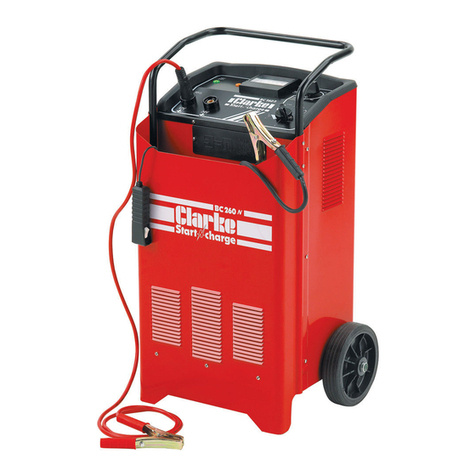
Clarke
Clarke Start n charge BC260N Operating and maintenance instructions
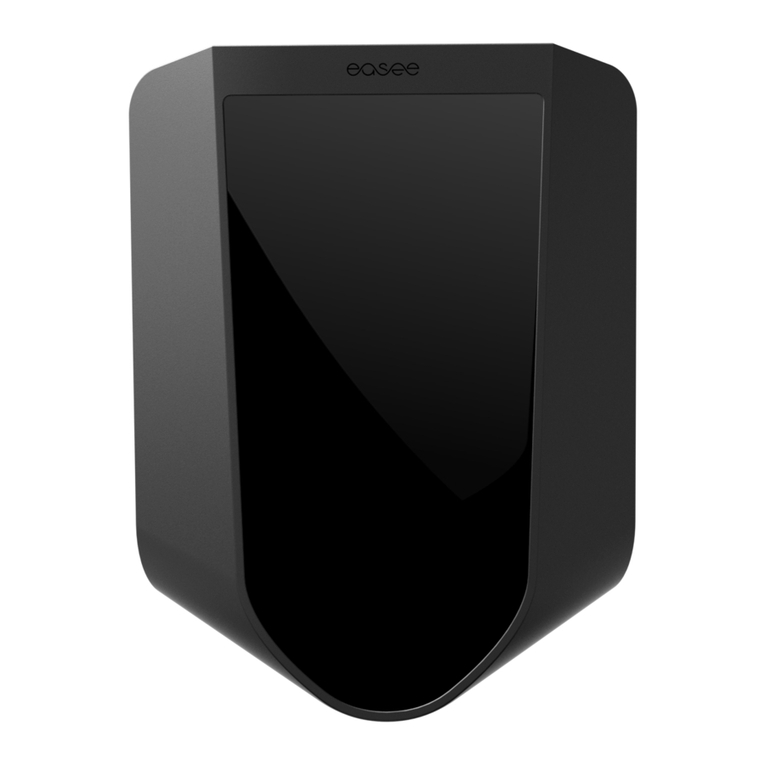
Easee
Easee Ready User's installation guide
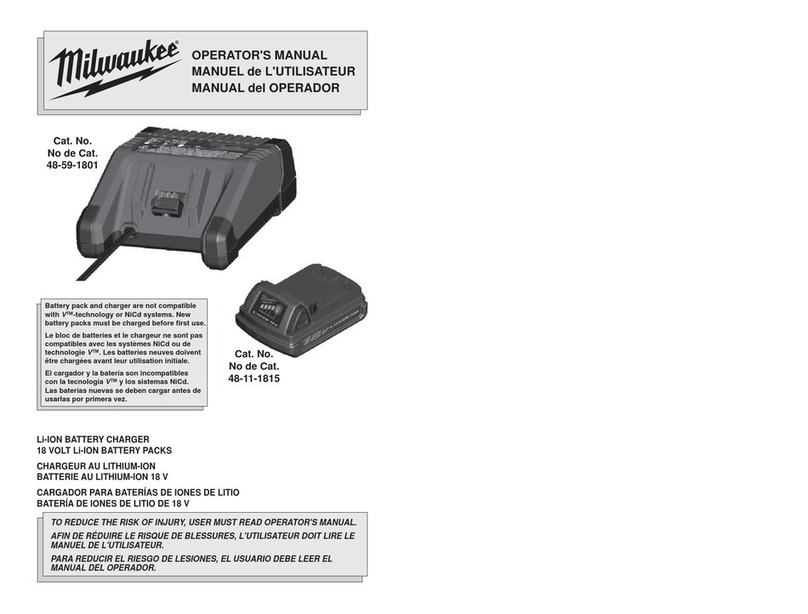
Milwaukee
Milwaukee 48-11-1815 Operator's manual

Bren-Tronics
Bren-Tronics BTC-70819 Operation and service manual
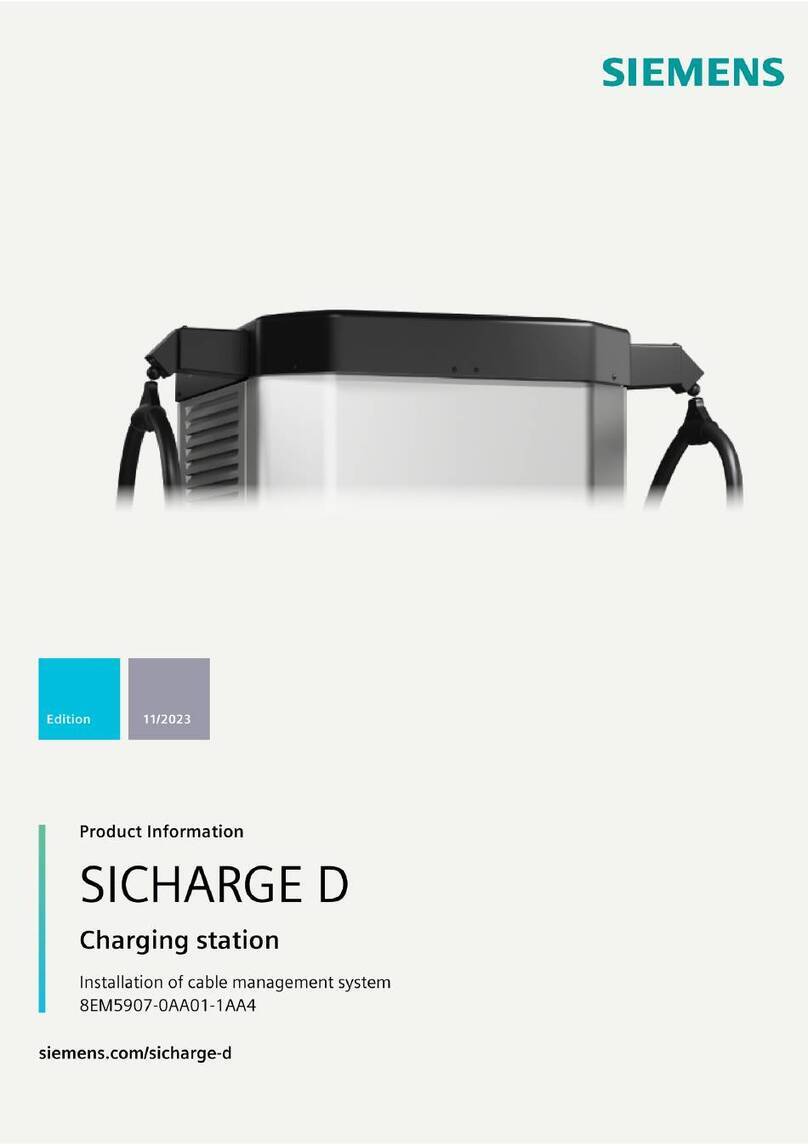
Siemens
Siemens SICHARGE D Product information
